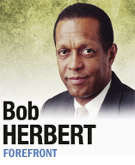Subscriber Benefit
As a subscriber you can listen to articles at work, in the car, or while you work out. Subscribe Now
 Early in Eugene Jarecki’s documentary, “Reagan,” you hear the voice of Ronald Reagan saying, “Someday it might be worthwhile to find out how images are created—and even more worthwhile to learn how false images come into being.”
Early in Eugene Jarecki’s documentary, “Reagan,” you hear the voice of Ronald Reagan saying, “Someday it might be worthwhile to find out how images are created—and even more worthwhile to learn how false images come into being.”
Indeed. The image that many, perhaps most, Americans have of the nation’s 40th president is largely manufactured. Reagan has become this larger-than-life figure who all but single-handedly won the Cold War, planted the Republican Party’s tax-cut philosophy in the resistant soil of the liberal Democrats and is the touchstone for all things allegedly conservative, no matter how wacky or extreme.
Jarecki’s documentary does a first-rate job of respectfully separating the real from the mythical. The truth is that Ronald Reagan, at one time or another, was all over the political map. Early on, he was a liberal Democrat and admirer of Franklin Roosevelt.
It is well known that Reagan was the head of the Screen Actors Guild. And though he was staunchly anti-Communist, he did not finger anyone when he appeared before the rabid House Un-American Activities Committee. But Jarecki learned that at the height of the Red Scare, Reagan had been secretly cooperating with the FBI.
Reagan was complicated. He was neither the empty suit that his greatest detractors would have you believe nor the conservative god of his most slavish admirers. He was a tax-cutter who raised taxes in seven of the eight years of his presidency. He was a budget-cutter who nearly tripled the federal budget deficit.
The biggest problem with Reagan, as we look back at his presidency in search of clues that might help us meet the challenges of today, is that he presented himself—and has since been presented by his admirers—as someone committed to the best interests of hard-working Americans. Yet his economic policies, Reaganomics, dealt a body blow to that very constituency.
Mark Hertsgaard, the author of “On Bended Knee: The Press and the Reagan Presidency,” says in the film, “You cannot be fair in your historical evaluation of Ronald Reagan if you don’t look at the terrible damage his economic policies did to this country.”
Paul Volcker, who served as chairman of the Federal Reserve during most of the Reagan years, commented in the film about the economist Arthur Laffer’s famous curve, which, incredibly, became a cornerstone of national economic policy. “The Laffer Curve,” said Volcker, “was presented as an intellectual support for the idea that reducing taxes would produce more revenues, and that was, I think, considered by most people a pretty extreme interpretation of what would happen.”
Toward the end of his comment, the former Fed chairman chuckled as if still amused by the idea that this was ever taken seriously.
What we get with Reagan are contradictions that have led us to a situation in which a president widely hailed as a hero of the working class set in motion policies that have been mind-bogglingly beneficial to the wealthy and devastating to working people and the poor.
But when all is said and done, it is the economic revolution that gained steam during the Reagan years and is still squeezing the life out of the middle class and the poor that is Reagan’s most significant legacy. A phony version of that legacy is relentlessly promoted by right-wingers who shamelessly pursue the interests of the very rich while invoking the Reagan brand to give the impression that they are in fact the champions of ordinary people.
Reagan’s son, Ron, says in the film that he believes his father “was vulnerable to the idea that poor people were somehow poor because it was their fault.” A clip is then shown of Ronald Reagan referring to “the homeless who are homeless, you might say, by choice.”
“Reagan,” an HBO documentary, is an important corrective to the fantasy of Reagan that has gotten such a purchase on American consciousness.•
__________
Herbert is a New York Times columnist. Send comments on this column to [email protected].
Please enable JavaScript to view this content.
